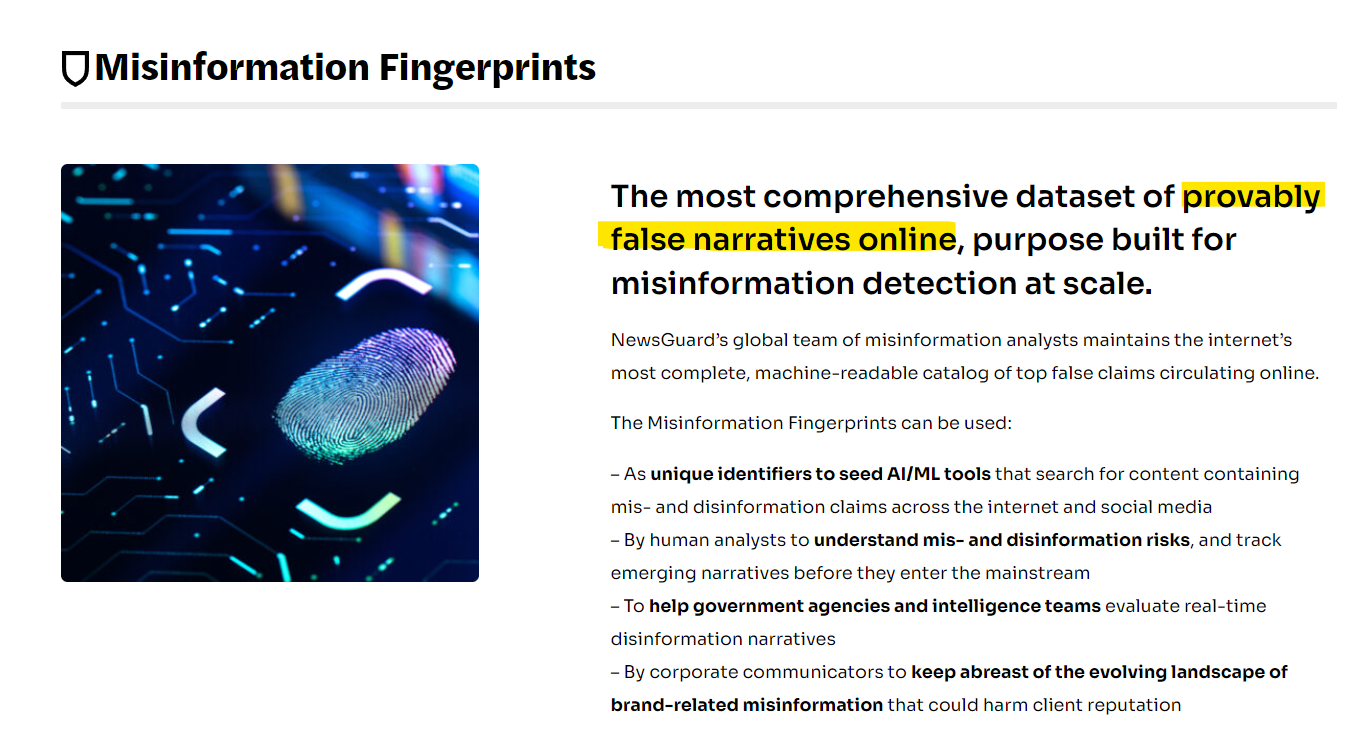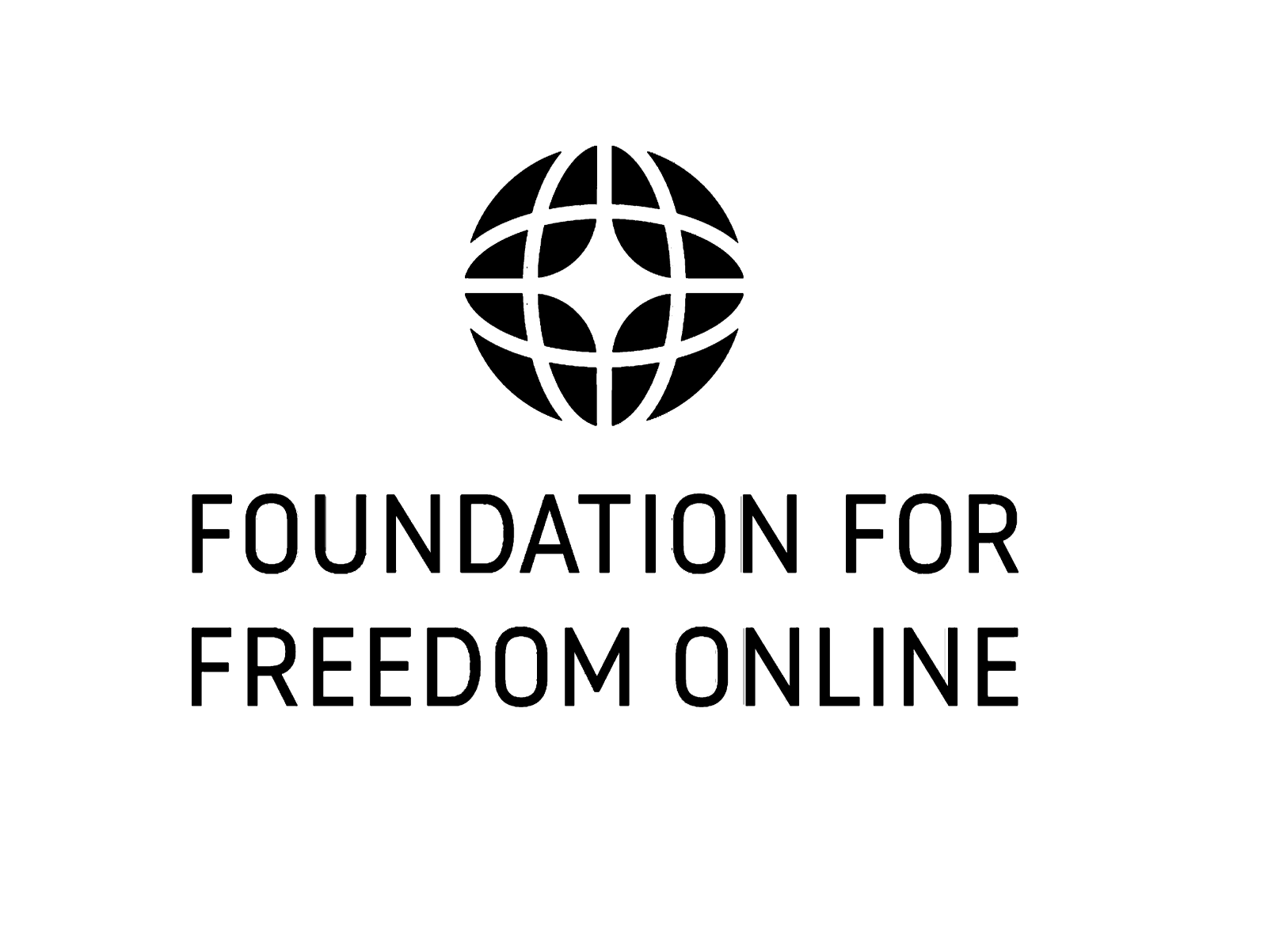NewsGuard, the for-profit company backed by $750,000 in Pentagon funding that purports to rate the credibility of thousands of news sites by assigning them “news nutrition labels,” claims to be a politically neutral guide to the vast online news ecosystem, guiding users on the reliability of news sites. Its real purpose is blacklisting. Low NewsGuard scores are intended to cut disfavored news sites off from billions in ad revenue, forcing them offline and out of business.
The company is now well-known as perhaps the most successful and influential member of the censorship industry. Despite claiming to be “apolitical,” it has a documented partisan bias, rating left-leaning sites 27 points higher, on average, than right-leaning alternatives. NewsGuard also sells databases of “provably false narratives” to censor at scale across the internet using AI speech detection techniques:

Another major part of NewsGuard’s strategy is financial blacklisting. From the beginning, the company did not hide its intention to suppress the ad revenue of the news sources it targeted.
In a public presentation in 2018, just months after the company’s launch, co-founder Steven Brill explained that one of NewsGuard’s goals was to provide a blacklist to advertisers, guiding them on which news sources to financially throttle.
“Advertisers have found that because of programmatic advertising which basically is advertising that follows you, or a certain demographic that resembles you, it doesn’t care what it doesn’t care what website the ad is on it cares about what you may be looking at. So brand name, highly reputable, advertisers have found that in their programmatic advertising they are ending up on fake news sites which undermines their credibility and really embarrasses them.
So the way we’re going to help them solve that is we are going to license in effect a whitelist, which is all of our green sites.”
A report on NewsGuard’s website also reveals the company’s preoccupation with programmatic ads, claiming that $2.6bn of ad revenue goes to “misinformation websites” every year.
The analysis was conducted by combining data from NewsGuard, an organization that deploys trained journalists to track online misinformation, and Comscore, which measures audience, traffic, and advertising metrics for tens of thousands of websites. NewsGuard and Comscore used a sample of 7,500 sites whose traffic and advertising costs are measured by Comscore and a dataset of over 6,500 news and information websites whose credibility is rated by NewsGuard, cross-referencing the data to estimate digital advertising spend on websites in the dataset that are rated untrustworthy by NewsGuard.
By cross-referencing that data against NewsGuard’s list of thousands of digital publishers that repeatedly publish false news, NewsGuard and Comscore estimated that 1.68% of display ad spending among the sample of 7,500 sites had gone to misinformation publishers.
If applied to the $155 billion global programmatic advertising industry, that would equate to an estimated $2.6 billion in global ad spend on misinformation websites each year.
The post went on to promote NewsGuard’s “inclusion lists” of “high-quality news and information sites” as the answer. The company threw in some Diversity, Equity and Inclusion (DEI) to sweeten the deal, explaining that the company’s lists include “publishers serving the Black, Hispanic, Asian, LGBTQ+ and other underserved communities.”
Second, brands can focus on expanding the universe of trusted, credible news sites on which they are advertising. NewsGuard offers inclusions lists of high-quality news and information sites that advertisers can use to reach their target audience. These inclusion lists include high-quality publishers reporting local news as well as publishers serving the Black, Hispanic, Asian, LGBTQ+ and other underserved communities. A recent case study found that this approach–building an inclusion list of highly trusted news publishers–resulted in lower CPMs, expanded reach, and a 143% higher click-through rate, simply from expanding advertising on credible news sites.
Brill’s claim that brands are “embarrassed” when their ads appear on certain websites is only partially true. Before 2016, brands suffered comparatively little public blowback over where their ads appeared. After 2016, a whole system emerged, consisting of media companies, NGOs, government funded “research institutes,” activist organizations, working together to ensure brands felt the maximum amount of pain for advertising on disfavored sites. Brill is correct that brands now regularly face public embarrassment and pressure over where their ads appear – but that state of affairs was manufactured by the same censorship industry which NewsGuard belongs to.
Brill was not shy about admitting that censorship was a major goal of his organization. Elsewhere in the presentation, he says NewsGuard has a “SWAT team” that targets trending stories and “wrestles them to the ground.”
“I should add that in addition to raiding the sites right now which is which is what our colleagues are doing as we’re standing here… we will have a SWAT team that is on alert and gets alerts on anything that is suddenly beginning to trend.
It could be because the site went up, you know, from Macedonia an hour ago and has redone the story of the Pope. We will know about, that our analysts will instantly turn to it, and they will wrestle it to the ground within an hour.“
One of the viral stories that NewsGuard helped “wrestle to the ground” was the New York Post’s reporting on Hunter Biden in 2020, a major election-year story based on now-uncontested information that was suppressed on Twitter and Facebook, having a significant impact on the election.
Former NSA director, CIA director, director of National Intelligence, and current NewsGuard advisory board member Michael Hayden signed a baseless letter claiming that the story was “Russian disinformation,” while Brill himself went on national TV to promote the same bogus claim.
Brill’s co-founder, Gordon Crovitz (recently exposed by FFO for his history of extreme partisan stance on immigration issues), used the presentation to outline another prong of NewsGuard’s strategy: seeking institutional partnerships to push the product on users, including on children through high school curricula.
The first product would be a browser plug-in version originally the first one will be Chrome browser. This will be available free to libraries across the country to use, to news literacy groups. We’re working with the academics at Stony Brook who are leaders and providing curricula for college kids and high school kids on media literacy.
We’re now busily discussing with the platforms with the platforms their opportunity to help solve this problem for their users by licensing us, and likewise we’re talking to agencies, CMOs, ad tech companies about licensing the whitelist of legitimate news publishers so that advertisers go back to safely advertising [with] legitimate news publishers.
This is strategy of seeking institutional partners to push NewsGuard onto captive audiences, particularly high school students, is precisely what they have followed. By acquiring the 1.7 million-strong American Federation of Teachers as a client, NewsGuard has ensured that its product will be used in a multitude of schools across the country. Meanwhile, states including California are passing laws mandating the study of “media literacy,” the field NewsGuard was instrumental in popularizing. Despite its track record of inaccuracy and partisanship, NewsGuard is still being pushed in both schools and boardrooms.





